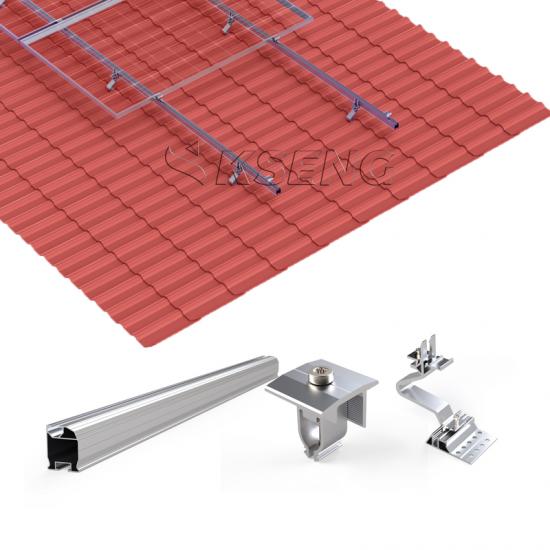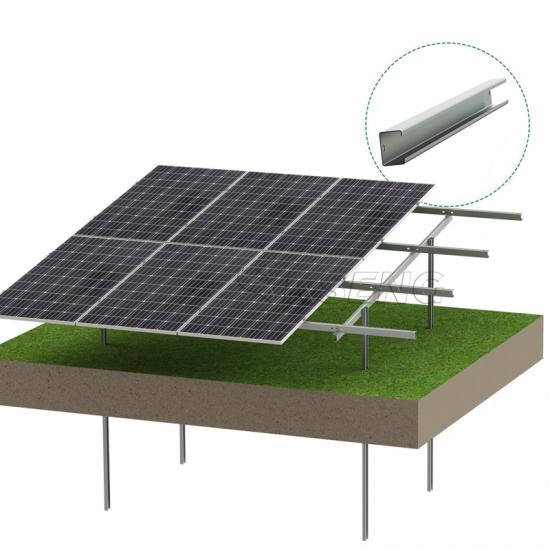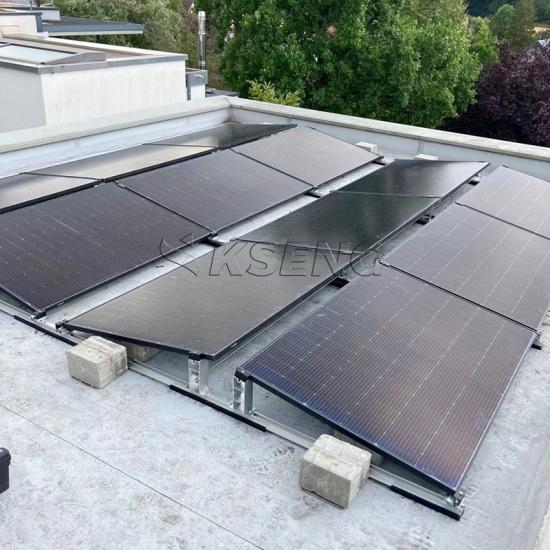How far apart should solar panel roof mounts be?
Jun 13, 2024
Installing solar panels on rooftops has become increasingly popular as renewable energy gains traction worldwide. Among the crucial decisions in this process is determining the optimal spacing between solar panel roof mounts. This seemingly technical aspect plays a significant role in the efficiency and effectiveness of a solar energy system.
 The ideal spacing between solar panel roof mounts depends on several key factors. Firstly, the size and orientation of the solar panels are crucial considerations. Panels should be spaced apart adequately to prevent shading, which can significantly reduce energy production. Calculating the spacing to minimize shading throughout the day, considering the sun's path and potential obstructions, is essential for maximizing energy output.
Geographic location and local weather patterns also influence spacing decisions. In areas prone to heavy snowfall, wider spacing may be necessary to prevent snow accumulation between panels, ensuring uninterrupted energy generation. Conversely, in regions with high temperatures, closer spacing can promote airflow and prevent overheating, thereby optimizing panel performance.
The ideal spacing between solar panel roof mounts depends on several key factors. Firstly, the size and orientation of the solar panels are crucial considerations. Panels should be spaced apart adequately to prevent shading, which can significantly reduce energy production. Calculating the spacing to minimize shading throughout the day, considering the sun's path and potential obstructions, is essential for maximizing energy output.
Geographic location and local weather patterns also influence spacing decisions. In areas prone to heavy snowfall, wider spacing may be necessary to prevent snow accumulation between panels, ensuring uninterrupted energy generation. Conversely, in regions with high temperatures, closer spacing can promote airflow and prevent overheating, thereby optimizing panel performance.
 Structural integrity is another critical aspect to consider. Proper spacing ensures that the weight of the panels is evenly distributed across the roof, minimizing stress on the solar mounting system and the underlying structure. Engineers must assess the roof's load-bearing capacity and design the mounting system accordingly to determine the appropriate spacing.
Moreover, aesthetic considerations may come into play, especially for residential installations. Balancing functionality with visual appeal, homeowners may opt for spacing that maintains a clean and streamlined appearance while maximizing energy production.
Structural integrity is another critical aspect to consider. Proper spacing ensures that the weight of the panels is evenly distributed across the roof, minimizing stress on the solar mounting system and the underlying structure. Engineers must assess the roof's load-bearing capacity and design the mounting system accordingly to determine the appropriate spacing.
Moreover, aesthetic considerations may come into play, especially for residential installations. Balancing functionality with visual appeal, homeowners may opt for spacing that maintains a clean and streamlined appearance while maximizing energy production.
 In conclusion, determining how far apart solar panel roof brackets should be requires careful consideration of various factors, including panel size, orientation, local climate conditions, structural integrity, and aesthetic preferences. By striking the right balance, solar panel systems can optimize energy production, withstand environmental challenges, and contribute to a sustainable future.
In conclusion, determining how far apart solar panel roof brackets should be requires careful consideration of various factors, including panel size, orientation, local climate conditions, structural integrity, and aesthetic preferences. By striking the right balance, solar panel systems can optimize energy production, withstand environmental challenges, and contribute to a sustainable future.


